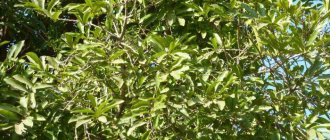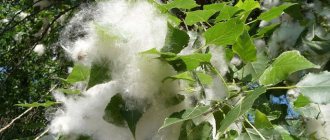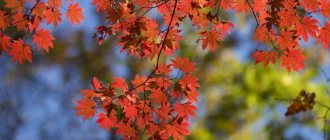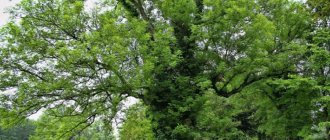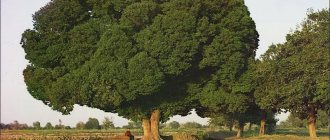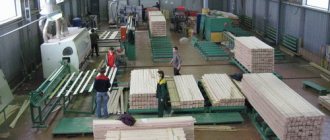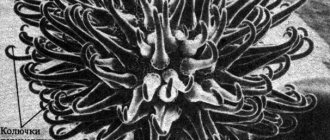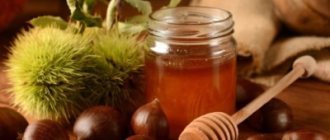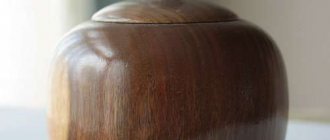Beech is a unique plant that has no analogues in the whole world. The tree has difficulty taking root in areas where it does not grow in natural conditions. It took Russian breeders almost a century and a half before it could grow on the territory of our country, at least as a collection.
Beech wood is highly valued among other types of materials. In most countries it is imported, and therefore it is quite expensive. And items made from it are valued much higher than similar products made from other types of wood.
Spreading
Where does the oriental beech grow? Under natural conditions, the tree is widespread in the Caucasus, where it grows at an altitude of one thousand to one and a half thousand meters above sea level. It forms beech or mixed deciduous forests. They occupy about 1 million hectares in the Caucasus, which is 25% of the total forest area.
In addition, this variety is widespread in Crimea - at a level of 700 to 1.5 thousand meters above sea level. It settles in gorges, along river banks, on the northern slopes of mountains, and much less often on plains.
In the subalpine zone, beech is presented in the form of multi-trunked, low-growing trees, often with trunks bent at the base or with fallen trunks. This is an extremely heat-loving breed, which is very demanding on air humidity and soil fertility.
References
- Robert Bix, An Etymological Dictionary of the Greek Language, Leiden and Boston, 2010, pp. 1565–6.
- Denk, Thomas with Guido Grimm and Vera Hemleben. 2005. Patterns of molecular and morphological differentiation in Fagus
(Fagaceae): phylogenetic implications. American Journal of Botany 92(6):1006-1016. - ^ a b c d
Shen, Chung Fu.
1992. Monograph of the genus. Fagus
Turn. Ex L. (Fagaceae). PhD. Dissertation, City University of New York. - Gomory, D. with L. Paule, R. Brus, P. Zhelev, Z. Tomovic and J. Gracan. 1999. Genetic differentiation and phylogeny of beech on the Balkan Peninsula. Journal of Evolutionary Biology 12: 746–752.
- Denk, Thomas with Guido Grimm, K. Stoegerer, M. Langer, Vera Hemleben 2002. The evolutionary history of Fagus
in western Eurasia: evidence from genes, morphology and the fossil record. Plant Systematics and Evolution 232: 213-236. - Manos, Paul S. with Kelly P. Steele. 1997. Phylogenetic analysis of the “higher” Hamamelididae based on plasid sequence data. American Journal of Botany 84(10): 1407-1419.
- Wilf, P.; Johnson, K.R.; Cuneo, North Carolina; Smith, M.E.; Singer, B.S.; Gandolfo, M.A. (2005). "Eocene plant diversity in Laguna del Unco and Rio Picileufú, Patagonia, Argentina." American naturalist
.
165
(6):634–650. Doi:10.1086/430055. PMID 15937744. S2CID 3209281. Received 2019-02-22. - Lawrence, Gail. A Field Guide for Friends: Learning to Observe the Natural World. Hanover: University Press of New England, 1984. 75-76. Print.
- "beech". Columbia Encyclopedia. New York: Columbia University Press, 2008. Reference Creed. Internet. September 17, 2012
- beech bark disease. “Dictionary of microbiology and molecular biology. Hoboken: Wiley, 2006. Credo Reference. Web. September 27, 2012"
- (JPG). linnaeus.nrm.se
. Retrieved 2019-08-07. - “International foresters explore greener, friendlier forests in the Lake District.” Forestry Commission. Retrieved August 4, 2010.
- "Tsvm Klydach". Rural Landscape and Wildlife Council for Wales. Archived from the original on September 25, 2010. Retrieved August 4, 2010.
- Preston, Pearman and Dines (2002) A New Atlas of British Flora. Oxford University Press
- Bradshaw, R.H.W. with N. Quito and T. Gieseke. 2010. Factors influencing the Holocene history of Fagus. Forest Ecology and Management 259: 2204–2212.
- "Archival copy." Archived from the original on 2012-11-23. Retrieved 2012-05-17.CS1 maint: archived copy as title (site link)
- "Archival copy." Archived from the original on 2012-05-12. Retrieved 2012-11-22.CS1 maint: archived copy as title (site link)
- holistic-interior-designs.com, Modal fabric
, accessed October 9, 2011 - uniformreuse.co.uk, Modal Data Sheet Archived 2011-10-24 at the Wayback Machine
, accessed 9 October 2011 - fabricstockexchange.com, Modal Archived 2011-09-25 on the Wayback Machine
(dictionary entry), retrieved October 9, 2011. - Walter J (2006) Rifles of the World, 3rd edition. Krause Publications, Wisconsin, USA
- Food for Free (2004)
- “How did the beech mast save the people of Chios? “Interesting Earth.” interestingearth.com
. Retrieved 2019-10-07. - Saskia Pronk-Tiethoff (October 25, 2013). Germanic loanwords in the Proto-Slavic language
. Rhodopes. p. 81. ISBN 978-94-012-0984-7. - A Concise Anglo-Saxon Dictionary, Second Edition (1916), Blōtan-Boldwela, John R. Clarke Hall
- Icelandic-English Dictionary (1874), Borðsalmr-Bók Clisby and Vigfusson
- Douglas Harper. "Book". Internet Etymological Dictionary
. Retrieved 2011-11-18. - Burgi, M.; Gimmie, W. (2007). "Three Goals of Historical Ecology: Litter Collection in Central European Forests" (PDF). Landscape Ecology
.
22
: 77–87. doi:10.1007/s10980-007-9128-0. HDL:20.500.11850/58945. S2CID 21130814. - Gimmi, U.; Poulter, B.; Wolf, A.; Portner, H.; Weber, P.; Bürgi, M. (2013). “Soil carbon stocks in Swiss forests show the effects of historical forest floor clearing” (PDF). Landscape Ecology
.
28
(5): 385–846. Doi:10.1007/s10980-012-9778-4. HDL:20.500.11850/66782. S2CID 16930894. - McGrath, M.J.; and others. (2015). "Reconstructing forest management in Europe from 1600 to 2010." Biogeosciences
.
12
(14): 4291–4316. Bibcode:2015BGeo ... 12.4291 million Doi:10.5194 / bg-12-4291-2015. - Scalenghe, R; Minoja, A.P.; Zimmermann, S.; Bertini, S. (2016). "Effects of litter removal on soil formation: a case study in Bachs and Irchel (Switzerland)." Geoderma
.
271
: 191–201. Bibcode:2016Geod.271..191С. Doi:10.1016/j.geoderma.2016.02.024. - D. S. Vohra (1 June 2004). Bach Flower Remedies: A Comprehensive Study
. B. Jain publishers. clause 3. ISBN 978-81-7021-271-3. Retrieved September 2, 2013.
Description of the eastern beech
Today we will talk about a tree growing in Russia and Transcaucasia. This powerful plant is the oriental beech. The height of an adult tree reaches from 30 to 50 meters and up to two meters in trunk diameter. The tree has a powerful, dense, wide cylindrical or ovoid crown.
The bark is thin and smooth. Young shoots are slightly pubescent. The peculiarity of this tree is its smooth ash-gray trunk, oval-shaped leaves, slightly pointed at the ends with a perfectly smooth edge. Leaves petiolate, alternate. The upper part of the plate is bare and shiny. The petioles are pubescent, no more than 2 cm long. The length of the eastern beech leaf can vary from 7 to 20 cm. The stipules have a reddish tint. They fall off early.
Pests and diseases
Representatives of beech trees are often affected by aphids, scale insects, mole crickets, red-tailed caterpillars, moth moths, and forktail moths. When they appear, the shoots become eaten away, the leaves curl, darken, and become covered with spots.
Beeches are also affected by root rot, powdery mildew, ascomycetes, chaga and hundreds of other fungal diseases. The fact that a lesion has occurred is indicated by strange-looking dark growths or deep cracks on the bark and leaves covered with a whitish coating.
For treatment and prevention, plants must be treated with fungicides several times a season: “Coronette”, “Antrakol”, “Alyette”. To combat insects, insecticides are used: “Aktaru”, “Provado”, “Calypso”.
Fruit
The main value of this variety of beech is its fruits, which ripen in the second half of September or early October. The fruits of eastern beech are triangular, smooth, sharply ribbed, single-seeded brown nuts. Their length does not exceed 2.2 cm, weight about 0.2 g. The nuts have a thin woody pericarp. Up to 90 thousand fruits are collected from one mature tree.
The fruit-nut looks like a large grain of buckwheat. Two or three of these nuts are collected and covered with a woody, strong shell, forming small shaggy balls. Their surface is covered with needle-shaped processes. In fact, they are soft and not prickly at all. The plus opens when the fruits ripen into 4 lobes. Productivity alternates in the lower parts of the mountains after three to four years, and in the highlands after 9 years. The nut harvest ranges from 20-1000 kg per hectare.
The wood is painted white with a light yellow tint. Overmature trees often have a reddish-brown false kernel. The growth rings are clearly visible in all sections.
Decorative properties
Eastern beech is an ornamental tree and shrub (when young), widely used to create green walls and hedges. They look great in combination with many coniferous and deciduous crops. Beech is used for both single and group plantings. Often these plants decorate city parks, areas of hospitals and sanatoriums, holiday homes and children's camps. The plant is decorative throughout the year, but beech is especially beautiful in the fall, when the foliage turns a bright golden-orange color.
Kinds
- Fagus chienii
WC Cheng - Fagus crenata
Blume - Siebold beech - Fagus engleriana
Seemen former Diels – Chinese Beech - Fagus macrophylla
Ehh. - North American beech - Fagus hayatae
Palib. ex Hayata - Taiwanese beech - Fagus japonica
Maxim. Japanese beech, blue Japanese beech - Fagus longipetiolata
Seemen - South Chinese beech - Fagus lucida
Roeder and E. H. Wilson - shiny beech - Fagus orientalis
Lipsky - eastern beech - Fagus sylvatica
L. - European beech - Fagus × taurica
Popl. — Crimean beech - † Fagus subferruginea
Wilf et al. 2005[7]
Features of the chemical composition
Oriental beech nut kernels contain:
- up to 48% proteins;
- starch and sugar (3 - 5%);
- tocopherol;
- organic acids and fatty oil (50 - 57%);
- tannins;
- nitrogenous substances (up to 30%);
- citric and malic acids.
In addition, they contain the poisonous alkaloid fagin, which decomposes when the nuts are roasted. As a result, they become harmless to humans. About 5% of creosote contains tar from beech wood. This substance is a mixture of different phenols. The bark contains vanilloside and citric acid. The wood contains cyclopentanol and ethyl guaiacol.
7sotok.by
The content of the article:
1.Description of beech.
2.Beech varieties.
3.Planting beech.
- Time and place to plant beech.
- The soil.
- Landing technology.
- Fertilizer.
4. Beech care.
- Trimming.
- Watering.
5. Beech diseases and pests.
6. Beech propagation.
The word beech itself was borrowed from the Slavs from the Germans, because in some Germanic languages the word “beech” is translated as “book,” and this is due to the fact that the first runes were written on wooden sticks made from beech.
The height of beech often exceeds 40-50 m, and the trunk diameter can reach more than 2 m. Despite the variety of beech species, all its varieties have a smooth crown, with thin gray bark. Beech leaves are entire, there are small serrations on some varieties of the plant. Most often, the leaf shape resembles an oval, the leaf length is from 7 to 15 cm, and its width ranges from 5 to 10 cm. It blooms simultaneously with the leaves blooming, forming flowers collected in earrings, up to 15 cm long. Beech is pollinated by the wind. Flowering of beech trees growing in groups occurs after 60 years, but for solitary trees, flowering occurs after 40-50 years. The beech fruit is acorn-shaped, collected in 2 or 4 pieces. in a cyst. Covered with a wooden shell, dark brown, up to 15 mm long. Beech nuts are edible but have a bitter taste.
Beech grows very slowly, but its lifespan can reach more than 400 years. Beech has a peculiarity: due to its spreading branches, which are formed mainly closer to the top of the tree, the lower branches do not receive light for photosynthesis, so they die off at an early age. The trunk of the tree remains bare, and spreading branches form at the top of the tree. The tree is very shade-tolerant, but loves the sun and prefers loamy soils. Most often it reproduces by seeds, but it can also produce lateral shoots.
Beech is often used as a green hedge; its long-growing foliage helps to maintain its curly shape for several months. It is also used in the landscape; massive or single plantings of beech are often observed in parks or gardens. Beech is planted on the banks of rivers or reservoirs, the roots of the tree protect the soil from erosion. Beech is very valuable because of its snow-white wood, it is used in the furniture industry, beech parquet is popular, and musical instruments are made. Edible oil is made from beech fruits and is used in the food and confectionery industries. Beech nuts contain many nutritional elements: proteins, sugar, citric and malic acid.
Varieties.
European Beech (Forest).
It is considered the most common variety. Due to its truly gigantic size, this variety is often planted in parks, gardens, or used for landscaping cities. But most often this variety can be found in the forest. European beech exceeds 50 m in height, and the diameter of the trunk of an adult tree can be more than 2.5 m. The bark is gray or light brown. European beech has spreading branches that form a lot of shade, so planting other plants nearby is not recommended. The leaves of beech are oval-shaped, up to 10 cm in size, dark green in color; in autumn the beech changes the color of the leaves to yellow or reddish shades. This variety does not like compacted and acidic soils; it prefers to grow on nutritious and loose soils.
European beech has many ornamental varieties. Among them the following type stands out:
"Atropunicea".
With black and red leaves, which look very impressive against the background of the green foliage of other plants.
"Cuprea".
Another type of beech with leaves of copper tones, with an unusual dissected and pinnate leaf shape.
"Tortuosa".
This variety is distinguished by long and weeping branches.
"Riversii".
It has unusual leaves of purple shades.
Eastern Beech.
A very popular species of the beech family. The height of the tree often exceeds 50 m; spreading branches form a lot of shade. Prefers to grow on moist soils, is shade-tolerant and very thermophilic. The crown of the eastern beech is thin, the trunk is gray, but the wood is snow-white, slightly yellowish, and resistant to rot. It differs from others in having more elongated leaves. Young leaves are light green in spring, and change color to yellowish-red in autumn. Oriental beech is usually propagated by seeds, cuttings or shoots. The seeds have a high germination rate, but for the first 3 years, the seedlings grow slowly, and then their growth accelerates.
Beech Jagged.
Belongs to the lesser-known beech varieties. Japan is considered the birthplace of this species. A tree, no more than 30 m high, with long and spreading branches. The trunk of the tree is round in shape, gray in color, with a diameter of 1.5 m. The leaves of the jagged beech are shaped like the leaves of a laurel tree, small, 7 cm long, dense, dark green in color. They retain their green tint until late autumn. Like other beech varieties, the jagged variety prefers to grow in sunny locations, but also grows well in the shade. Loves moisture and nutritious soils. It tolerates severe frosts well and is resistant to diseases and pests.
Large Leaf Beech.
It differs from other varieties in its unusual leaf shape. On long branches, many round leaves are formed, dark green in color with white veins. This shape of the leaves gives the beech a lush appearance and allows it to form a rounded shape. The tree itself is small in height, after 10 years the tree will grow no more than 12 m, the crown is light brown. This species does not tolerate the shade of taller plants, prefers sunny places, and loves moist soils. Will withstand cold and frost.
Large-leaved beech.
This beech variety is primarily native to the United States. The tree reaches a height of 35-40 m. The trunk is straight, the bark is smooth, bluish-gray in color. The leaves are oval in shape, green in shades with pointed ends and a transverse pattern. This beech variety is most often found in mixed forests and tolerates shade and drought well. Seedlings can be obtained from seeds, their germination rate is quite high, but caring for young trees in the first years will require attention. Young beech of this species needs shelter for the winter, careful watering and nutritious soil.
Landing.
Time and place to plant beech:
Beech is an unpretentious tree that takes root well in any soil. But when planting young seedlings, it is still necessary to choose the right time for planting. In spring, young trees will take root well in a new location if they are provided with thorough watering. It is also important to plant seedlings before buds bloom on the trees. Otherwise, the beech will slow down its growth and become sick.
A month before the onset of cold weather (October - early November), seedlings can be planted in the ground. In the fall, the tree will need a lot of moisture to survive the first winter. Mature trees are not afraid of the cold, beech is frost-resistant, but young trees are better covered with film or covered with a thick layer of grass. This will help the tree not only retain heat and moisture in the ground, but also save the plant from rodents. The place for planting beech should be chosen based on the fact that beech is long-lived; with proper care, the tree can live up to half a century. In addition, the older the tree, the more branches there are, forming abundant shade, under which smaller plants cannot grow.
The soil:
Beech grows well in all soils, but does not tolerate oxidized and trampled soils. The soil for planting should be prepared almost six months before planting. This is due to the fact that the root system of the tree develops quickly. The roots will need plenty of room to develop and well-prepared soil. Therefore, in order to plant beech seedlings in the spring, at the end of autumn you need to choose a place, dig a hole and fill it with water. In a few months the ground will settle, and frost will serve as a preventative against pests.
Planting technology:
The technique for planting beech trees is simple. For beech, it is better to dig a larger hole, 80x80 cm, for faster root development. You can put some crushed stone or small broken bricks at the bottom of the hole. Next, the soil is prepared from soil, peat and mineral fertilizers, everything is thoroughly mixed. Young seedlings are placed in a hole and covered with the prepared mixture. The tree must be filled with warm water and the ground covered with dry grass to retain moisture.
Fertilizer:
Beech needs fertilizers and fertilizing only when it is young. Fertilizing in the spring can consist of a solution of mullein or manure, mineral and potash fertilizers. But in the fall, the best feeding will be simply digging up the earth around the tree trunk. This will allow the roots to breathe and protect them from harmful insects.
Care.
Trimming:
Beech produces abundant foliage, and the older the tree, the better the branches and leaves grow. In addition, due to the slow growth of foliage and tree crown, beech is used to create hedges. Able to maintain its given shape for a long time. Once a year, preferably in the spring, young trees undergo sanitary pruning. Branches frozen after winter are pruned. Branches that provide shade to the lower shoots are also removed. Branches that are infested with pests or broken are cut out. In adulthood, beech does not need pruning.
Watering:
Thanks to its gigantic size and developed root system, you might think that beech is able to get its own water, but this only applies to mature trees. Young seedlings need watering at least once a week. Beech also loves “sprinkling”, sprinkling with water, this helps get rid of dust on the leaves and “wash away” many pests. Beech is also demanding when it comes to loosening. After watering, a few days later, the soil around the tree must be loosened to give the roots air. Next, you can cover the ground with spruce branches or grass to retain moisture.
Diseases and Pests.
The beech tree suffers most from the silkworm butterfly and caterpillars. These insects eat young beech leaves, thereby exposing the branches, making the tree weaker and more susceptible to disease. The caterpillars are mostly green in color, so it is extremely difficult to notice them against the background of foliage. The pest can be detected by irregularly shaped leaves, which subsequently turn yellow and fall off.
Secretive stem pests are also capable of harming beech trees. These pests “settle” in the trunks of mature trees, feed on its sap and lay larvae. These include the granular longhorned beetle; this beetle harms the tree by eating its leaves, buds and flowers.
Aphids and mites also often attack beech trees and live on branches and leaves in entire colonies. These pests also “feast” on young leaves, buds and even thin branches. If these insects are not detected in time, the beech bark may crack, which will lead to the tree becoming infected with beech canker fungus.
Beech is also infected with powdery mildew, which covers the leaves with small white cobwebs, causing the leaves to fall off in the second half of summer. Caps of various mushrooms may also form on the tree, which indicates rot in the tree bark or wilting of the entire plant.
The most proven way to eliminate these diseases is to timely spray the tree with various chemicals, solutions of ash, grated soap, infusions of dandelions and garlic.
Reproduction.
Beech propagates in several ways: by cuttings, grafting or layering - these 3 methods are extremely uncommon, because the survival rate is very low, it takes a lot of time and effort; most often these breeding methods are used by experienced breeders. But even a novice gardener can propagate beech using seeds.
First you need to collect quality seeds for planting. Beech seeds resemble sunflower seeds in shape, are collected in early or mid-autumn, the ripe fruits fall to the ground, so the germination rate of these seeds will be much higher. The seeds should also be dry and brown in color. In winter, seeds must be stored in a cold place, first hidden in a box and wrapped in cloth - this reminds the seeds of the natural storage conditions in winter, in the cold and on the ground. Closer to spring (early March), they need to be taken out and warmed up in a warm place for several days. To neutralize seeds from diseases, you can place them for a day in a weak solution of potassium permanganate.
The seeds are first planted in small containers, previously prepared in loose and moist soil. To help them germinate faster, use a sharp knife to carefully open the bark without damaging its core. It is better to plant the seeds one at a time, because... The beech germinates quickly and begins to actively grow within a month after planting. The seed is placed in a container and covered with soil, after which it is watered generously with warm water. To create a “greenhouse” effect, you can cover the container with a plastic bag, remembering to periodically open it to ventilate the soil. In just a couple of weeks, if planted correctly, young shoots will appear, which require frequent watering, sun and high indoor humidity.
Often beech is planted using green shoots. In place of the old felled tree, on its stump, the beech quickly produces young shoots. Such a shoot can be carefully cut with a knife, and small indentations can be cut at the end of the seedling (this is where new tree roots will grow). The seedling must be immediately placed in water. To prevent the water from stagnating, it must be changed periodically, removing the mucus that has formed from the beech roots and rinsing it with water. In a couple of weeks, roots will begin to sprout on the young beech tree. After they grow and become stronger, the tree can be planted in a permanent place. It is worth saying that young beech trees do not like replanting, the roots weaken and the tree slows down its growth. Therefore, you should worry about choosing a place in advance.
Use on the farm
Eastern beech wood has unique properties. However, it is not very resistant to rotting. In terms of durability and strength, it is significantly inferior to chestnut, oak, and coniferous wood, so it is used less often in construction. It is mainly used in furniture production (previously bent Viennese furniture was made from it), in the manufacture of barrel staves and for the production of parquet. In addition, sleepers are made from it after preliminary impregnation with special compounds, and roofing shingles.
Due to the plasticity of wood, musical instruments are made from it. Beech is a highly sought-after material for making knife handles and weapon butts. Beech is a medium-density species with high breathability. Its wood easily absorbs moisture and therefore requires special storage and processing conditions.
Beech nuts are used to make flour from which special flatbreads are baked. It is made from carefully peeled and well-roasted nuts. By adding a little wheat flour to it, you can get an excellent mixture for baking pancakes, pancakes, and crumbly cookies.
Beech nuts are a valuable nutritious food for animals that live in the Caucasian forests, for example, wild boars. In addition, buried by animals in the ground, they give rise to young shoots of the beech forest. Beech branches are used as feed for domestic goats and sheep.
High-quality edible oil is made from the nuts. It is colored light yellow and is not inferior in taste and nutritional value to olive oil. In baking, they often replace almond and nut butter. In addition, it is seasoned on salads, added to second and first courses, as well as to confectionery products. The cake remaining after pressing the oil is used to make coffee surrogate. Interestingly, beech is considered one of the sweetest trees. By breaking off a piece of bark, you can collect healthy, sweet and very pleasant-tasting beech juice.
Classification
Modern genus classification systems recognize 10 to 13 species in two distinct subgenera: Engleriana
and
Fagus
.[2][3] The
Engleriana
subgenus is found only in East Asia and is markedly different from
the Fagus
subgenus in that these beeches are low-branched trees, often consisting of several large trunks with yellowish bark.
Other distinguishing characteristics include a whitish coating on the undersides of the leaves, visible tertiary leaf veins, and a long, smooth, dome-shaped flower stalk. Fagus japonica
,
Fagus engleriana
, and the species
F. okamotoi
, proposed by botanist Chung-Fu Shen in 1992, constitute this subgenus.[3]
The more famous Fagus
beeches of the subgenus are highly branching, with tall strong trunks and smooth silver-gray bark.
This group includes Fagus sylvatica
,
Fagus macrophylla
,
Fagus crenata
,
Fagus lucida
,
Fagus longipetiolata
, and
Fagus hayatae
.[3] The classification of European beech,
Fagus sylvatica
is complex, with many different names proposed for different species and subspecies in the region (e.g.
Fagus taurica
,
Fagus orientalis
, and
Fagus moesica
[4]). Research shows that beeches in Eurasia differentiated quite late in evolutionary history, during the Miocene. Populations in this area represent a range of often overlapping morphotypes, although genetic analyzes do not clearly support distinct species.[5]
A recent study found that members of the family Fagaceae Fagus
evolutionarily the most basal group.[6]
The southern beeches
(genus
Nothofagus
), previously considered closely related to beech, are now considered members of a separate family, Nothofagaceae (which remains a member of the order Fagales). They are found in Australia, New Zealand, New Guinea, New Caledonia, Argentina, and Chile (mainly Patagonia and Tierra del Fuego).

